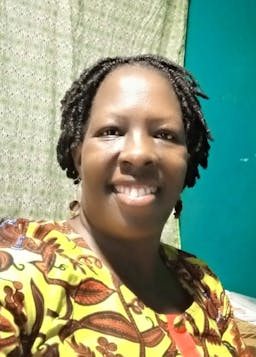Aciom: Trafficked for Ritual Sacrifice and Now Lives on to Achieve Her Dream (Pt 1)
Sep 30, 2019
Story
Human trafficking has been in existence from time immemorial. The abolition of slave trade did not stop this evil practice. Today this practice continues to be performed by perpetrators who are people close to the victims. I met Aciom (not real name) 15 years ago through a friend and came to know that she was a survivor who was trafficked for ritual child sacrifice when she was about 7 years. Now in late 30s Aciom was able to narrate her ordeal to me, a story she shares with pain and tears
Uganda has passed laws to stop the inhuman practices; i.e. the Prevention of Trafficking of Persons Act (2009), Child sacrifice and mutilations Act (2013). Girls and women often tend to be more vulnerable to trafficking. However, the enforcement of these laws to protect, prevent and prosecute offenders remains a challenge. Statistics on human persons in Uganda is difficult to obtain because it is a covert activity. The U.S (2005) estimates that between 600,000 to 800,000 men, women and children are trafficked annually worldwide across international borders. Internal human trafficking data is almost not available.
Aciom remembers being forcefully (abducted) form her village (about 300 kilometres away) and brought to Kampala city by a corporate woman who had promised to take good care of her. She was delivered to the house of a woman she then learnt was a ritualist. She was kept in a small room like a prisoner under tight watch. In that compound lived another family lived in a detached house with house maids. In this semi completed house was a care taker whose spouse was a ritualist and so had established her shrine in the far end of the enclosed compound.
It is common that people in Kampala city mind their own business with negligible attention on what happens in their surroundings. However, the tight watch Aciom was subjected to attracted keen attention of the house maids in the neighborhood who began discussing among themselves. Eventually the house maid from Aciom’s compound divulged the secret to others that a corporate woman had brought Aciom for ritual sacrifice and this would happen in the next 3 days. The maid who took food to Aciom every day heard the ritualist say that her time for sacrifice was the following day.
A day to Aciom’s fateful day of sacrifice, Mama Ketura’s maid in panic and fear confided in her what was going on. Mama Ketura told them to sneak out Aciom into her house. The house maids then plotted Aciom’s escape in just a few hours. Mama Ketura’s house was 2 plots away from where Aciom was confined. As far as 10 years ago, Uganda had no laws prohibiting trafficking of persons so of concern to Mama Ketura was the murder which was about to be committed. So she made a report to the nearest police post of a lost child in her custody. Due to lack of facilities to take care of children with the police, she was asked to keep the child until the relatives were located. The housemaids successfully sneaked out Aciom without notice of the ritualist.
On the D-day of the ritual, the ritualist realized that the girl for sacrifice was missing; a door to door search was mounted in the neighborhood. On arriving in Mama Ketura's (not real name) home, where Aciom was kept, Ketura acknowledged that she had the child, and demanded that they go to the police for an order/authorization for the release of the child to her. This response did not go well with the ritualist. Amidst threats and coercion Mama Ketura had no choice but to let the ritualist know that she was aware that the purpose for which she sought the girl (Aciom) was human sacrifice for her client. The ritualist in fear quickly retreated saying she can keep the girl till further notice. This is how Aciom survived the knife of a ritualist.
Although there are no precise statistics of human trafficking in Uganda due to the nature of the offense, the act is known to be rampant. It is necessary that the government steps up approaches to eliminating the vice of human trafficking within Uganda by creating awareness on the laws, implications, risks, and dangers at community level. It’s also important to educate the populations on the referral pathways; where should they report or go to seek help. (Part 2 to be published)




